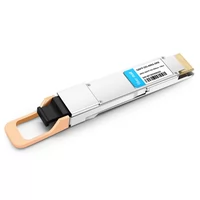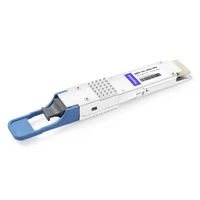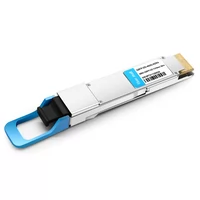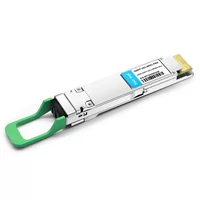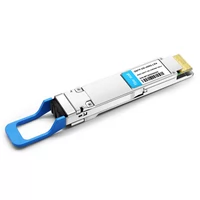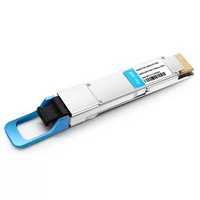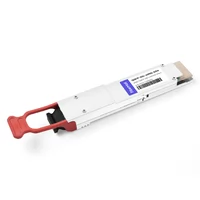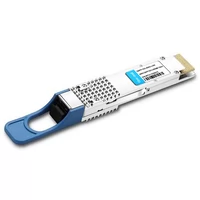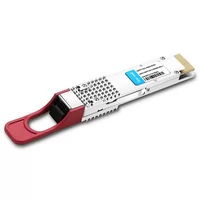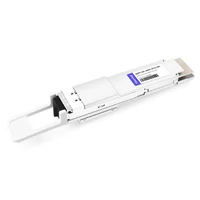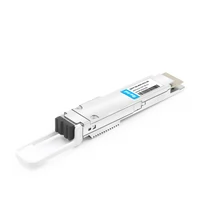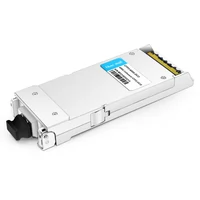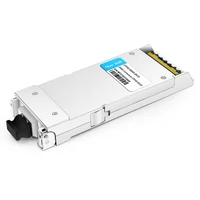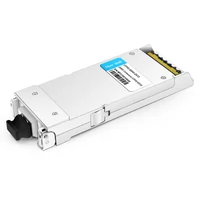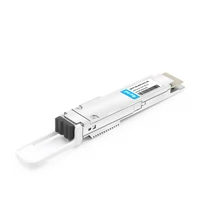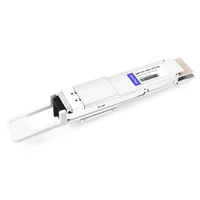Abstract
Coherent optical transmission technology has become an essential part of high-capacity, long-distance fiber-optic networks. This advanced modulation technology can encode data into the amplitude, phase, and polarization of light. The core of each coherent transceiver is a highly complex digital signal processor (DSP), which performs signal processing that is crucial for achieving coherent transmission. This article provides a comprehensive overview of the different functions within the electronic engine of the coherent transceiver, with a focus on the DSP, and summarizes the latest developments and future challenges of DSP technology.
Table of Contents
ToggleIntroduction
In recent decades, global Internet traffic has grown exponentially, doubling every two years. This sustained growth stems from the huge demand for bandwidth-intensive applications, such as video streaming, cloud computing, social media, and the large number of networked devices driven by the Internet of Things (IoT). To keep up with the data explosion, service providers have transformed the core optical transmission network from simple point-to-point links to high-speed, flexible mesh topologies. However, relying on traditional optical transmission technology limits the capacity and transmission distance, becoming a bottleneck for future growth.
Coherent transmission technology has emerged as the solution, enabling the core network to increase the data volume transmitted over a single fiber by 100 times. This advanced modulation scheme encodes information into three attributes of light: amplitude, phase, and polarization. Coherent transmission opens up capacity and transmission distance far beyond traditional simple on-off keying techniques.
The core of each coherent transceiver is a highly complex digital signal processor (DSP) composed of dedicated electronic circuits and advanced algorithms. The DSP performs signal processing that is essential for achieving coherent transmission, including encoding/decoding data, compensating for channel impairments, monitoring performance, etc. The innovation of the DSP was the catalyst for the coherent transmission technology revolution in the past decade.
As global Internet traffic grows rapidly, the capabilities of coherent technology also need to be improved accordingly. The enhancement of the DSP in terms of transmission distance, efficiency, and power consumption provides important opportunities for the industry to continue to improve coherent transceivers to meet our data needs. This article will provide a comprehensive overview of the different functions within the electronic engine of the coherent transceiver, focusing on the DSP. It will also summarize the latest developments and challenges of DSP technology.
The electronic engine of coherent transceivers
The DSP is part of a larger electronic system inside each coherent transceiver, called the electronic engine. As shown in Figure 1, the engine consists of the following key components:
- Analog processing circuits convert signals between analog and digital formats. Fiber transmission is analog optical signals, but data processing is digital. Format conversion is required when transmitting and receiving signals.
- Digital signal processing (DSP) encodes/decodes data and compensates for channel impairments. This is the core signal processing function.
- Forward error correction (FEC), which enhances the tolerance to noise and distortion. FEC enables coherent links to handle error rates that are one million times higher than traditional direct detection links.
- Bridge, which converts data between Ethernet and Optical Transport Network (OTN) formats.
- Glue logic circuits, such as microprocessors, serial/parallel converters (SERDES), etc., to connect the various modules.
Each module in the electronic engine contains dedicated circuits and algorithms, making it a separate intellectual property. Therefore, developing the entire engine requires expertise in various fields.

Figure 1. The layout of the electronic engine for coherent optical transceivers, including the order of signal processing by the engine.
The Fundamentals of DSP
Now focusing on the DSP unit itself, this module performs the key work of mapping digital data to optical signal attributes and vice versa.
The core technology for achieving this mapping is called orthogonal modulation, which encodes data to the amplitude and phase of the optical signal. A four-state orthogonal modulation scheme is called Quadrature Phase Shift Keying (QPSK). More advanced variants such as 16-state Quadrature Amplitude Modulation (16-QAM) can achieve higher data rates.
As shown in Figure 2, some of the core functions of the DSP include:
- Encoding/decoding data to phase and polarization using orthogonal modulation schemes.
- Inserting pilot signals to assist the receiver in decoding. The pilot provides a reference for phase and polarization.
- Adaptive equalization to compensate for signal spectrum distortion caused by the fiber channel.
- Dispersion compensation to counteract the dispersion effect that causes optical pulse spreading.
- Nonlinear compensation to mitigate nonlinear effects such as self-phase mixing.
- Spectral shaping using digital filters to achieve maximum bandwidth utilization.
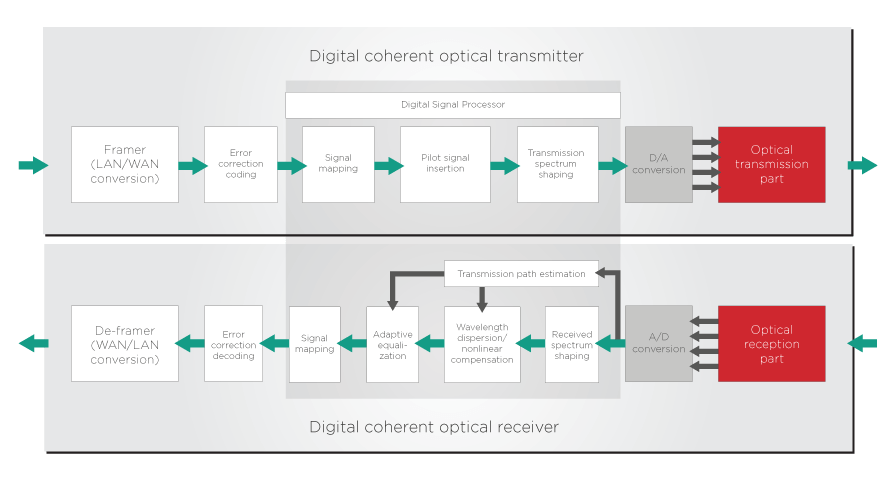
Figure 2. Layout and sequence of DSP modules followed when the signal is transmitted and received
Latest Advances in DSP Technology
Looking ahead, two important directions for DSP advancement are transmission distance/efficiency and energy efficiency. Technologies such as probabilistic constellation shaping (PCS) and faster modulation formats have a bright future.
As shown in Figure 3, PCS uses signal constellation points in a non-uniform way, transmitting more bits under a given power budget. PCS brings significant benefits, including increased transmission distance, better non-linear tolerance, and greater flexibility.
Regarding modulation formats, the industry is gradually moving from early QPSK systems to higher-order modulation such as 16-QAM and 64-QAM. However, improved DSP algorithms are needed to handle the increased distortion of these high-density modulation formats.
In terms of energy efficiency, DSP has consumed about 50% of the total energy of coherent transceivers. Increasing capacity and bandwidth will further increase the energy demand for DSP chips. DSP power scales with bandwidth, modulation format, FEC, and other processing functions. Therefore, intelligent optimization of DSP and its electrical connections is crucial for future expansion.
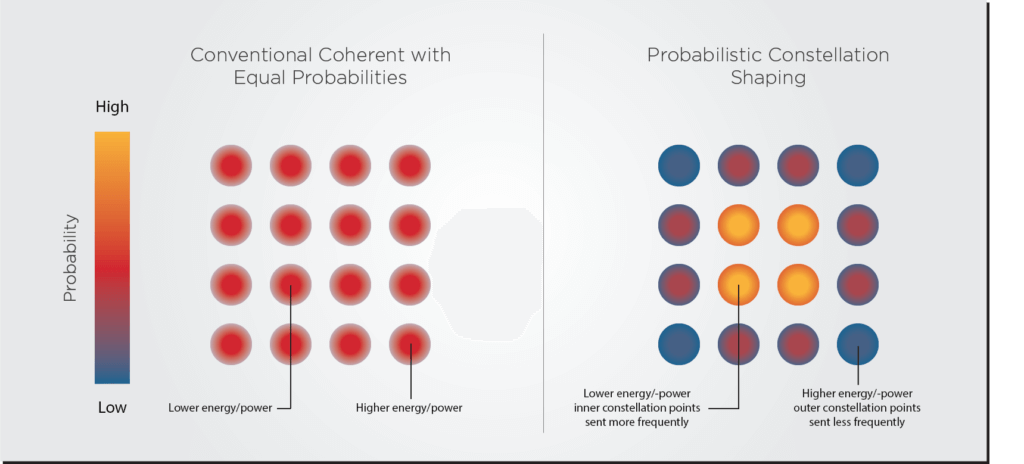
Figure 3. Comparison of conventional 16-QAM and probabilistic constellation shaping (PCS) 16-QAM. Image source: Infinera.
Summary
In the past decade, DSP innovation has been a revolutionary catalyst for coherent transmission technology in optical networks. But we cannot stand still, as global internet traffic continues to grow rapidly under the drive of high-bandwidth applications such as video, virtual reality, and the Internet of Things.
DSP enhancement in transmission distance, efficiency, and power consumption provides important opportunities for the industry to continue improving coherent transceivers. With the growth of high-bandwidth services, DSP will continue to be the digital heart of the next-generation optical network, enabling fiber capacity to meet data demand. DSP’s continuous innovation is essential for avoiding capacity crunch and maintaining the growth of the digital world.
Related Products:
-
 NVIDIA(Mellanox) QMMA1U00-WS Compatible 400G QSFP-DD SR8 PAM4 850nm 100m MTP/MPO OM3 FEC Optical Transceiver Module
$149.00
NVIDIA(Mellanox) QMMA1U00-WS Compatible 400G QSFP-DD SR8 PAM4 850nm 100m MTP/MPO OM3 FEC Optical Transceiver Module
$149.00
-
 Cisco QDD-400G-DR4-S Compatible 400G QSFP-DD DR4 PAM4 1310nm 500m MTP/MPO SMF FEC Optical Transceiver Module
$400.00
Cisco QDD-400G-DR4-S Compatible 400G QSFP-DD DR4 PAM4 1310nm 500m MTP/MPO SMF FEC Optical Transceiver Module
$400.00
-
 Cisco QDD-4X100G-FR-S Compatible 400G QSFP-DD XDR4 PAM4 1310nm 2km MTP/MPO-12 SMF FEC Optical Transceiver Module
$580.00
Cisco QDD-4X100G-FR-S Compatible 400G QSFP-DD XDR4 PAM4 1310nm 2km MTP/MPO-12 SMF FEC Optical Transceiver Module
$580.00
-
 Cisco QDD-400G-FR4-S Compatible 400G QSFP-DD FR4 PAM4 CWDM4 2km LC SMF FEC Optical Transceiver Module
$500.00
Cisco QDD-400G-FR4-S Compatible 400G QSFP-DD FR4 PAM4 CWDM4 2km LC SMF FEC Optical Transceiver Module
$500.00
-
 Cisco QDD-400G-LR4-S Compatible 400G QSFP-DD LR4 PAM4 CWDM4 10km LC SMF FEC Optical Transceiver Module
$600.00
Cisco QDD-400G-LR4-S Compatible 400G QSFP-DD LR4 PAM4 CWDM4 10km LC SMF FEC Optical Transceiver Module
$600.00
-
 Cisco QDD-4X100G-LR-S Compatible 400G QSFP-DD PLR4 PAM4 1310nm 10km MTP/MPO-12 SMF FEC Optical Transceiver Module
$1000.00
Cisco QDD-4X100G-LR-S Compatible 400G QSFP-DD PLR4 PAM4 1310nm 10km MTP/MPO-12 SMF FEC Optical Transceiver Module
$1000.00
-
 QSFP-DD-400G-ER4 400G QSFP-DD ER4 PAM4 LWDM4 40km LC SMF without FEC Optical Transceiver Module
$3500.00
QSFP-DD-400G-ER4 400G QSFP-DD ER4 PAM4 LWDM4 40km LC SMF without FEC Optical Transceiver Module
$3500.00
-
 Cisco QDD-400G-LR8-S Compatible 400G QSFP-DD LR8 PAM4 LWDM8 10km LC SMF FEC Optical Transceiver Module
$2500.00
Cisco QDD-400G-LR8-S Compatible 400G QSFP-DD LR8 PAM4 LWDM8 10km LC SMF FEC Optical Transceiver Module
$2500.00
-
 QSFP-DD-400G-ER8 400G QSFP-DD ER8 PAM4 LWDM8 40km LC SMF FEC Optical Transceiver Module
$3800.00
QSFP-DD-400G-ER8 400G QSFP-DD ER8 PAM4 LWDM8 40km LC SMF FEC Optical Transceiver Module
$3800.00
-
 QSFP-DD-400G-DCO-ZR+ 400G Coherent QSFP-DD DCO C-band Tunable Optical Transceiver Module
$6500.00
QSFP-DD-400G-DCO-ZR+ 400G Coherent QSFP-DD DCO C-band Tunable Optical Transceiver Module
$6500.00
-
 QSFP-DD-400G-DCO-ZR 400G Coherent QSFP-DD DCO C-band Tunable Optical Transceiver Module
$6000.00
QSFP-DD-400G-DCO-ZR 400G Coherent QSFP-DD DCO C-band Tunable Optical Transceiver Module
$6000.00
-
 CFP2-400G-DCO 400G Coherent CFP2-DCO C-band Tunable Optical Transceiver Module
$6500.00
CFP2-400G-DCO 400G Coherent CFP2-DCO C-band Tunable Optical Transceiver Module
$6500.00
-
 CFP2-200G-DCO 200G Coherent CFP2-DCO C-band Tunable Optical Transceiver Module
$6500.00
CFP2-200G-DCO 200G Coherent CFP2-DCO C-band Tunable Optical Transceiver Module
$6500.00
-
 Cisco CFP2-WDM-DETS-1HL= Compatible 200G Coherent CFP2-DCO C-band Tunable Optical Transceiver Module
$6500.00
Cisco CFP2-WDM-DETS-1HL= Compatible 200G Coherent CFP2-DCO C-band Tunable Optical Transceiver Module
$6500.00
-
 Cisco QDD-400G-ZR-S Compatible 400G Coherent QSFP-DD DCO C-band Tunable Optical Transceiver Module
$6000.00
Cisco QDD-400G-ZR-S Compatible 400G Coherent QSFP-DD DCO C-band Tunable Optical Transceiver Module
$6000.00
-
 Cisco QDD-400G-ZRP-S Compatible 400G Coherent QSFP-DD DCO C-band Tunable Optical Transceiver Module
$6500.00
Cisco QDD-400G-ZRP-S Compatible 400G Coherent QSFP-DD DCO C-band Tunable Optical Transceiver Module
$6500.00

